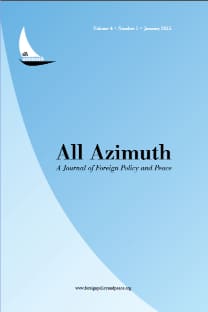Methodological Poverty and Disciplinary Underdevelopment in IR
This issue does not offer in-depth, step-by-step instructions on how to use the methodologies and methods discussed, nor does it in any way claim to be an all-inclusive exploration of methodologies in IR. Rather, it offers a look into 10 different methods and methodologies used for conducting research in IR, from the behind-the-scenes perspectives of scholars who have actually used them in their own work. In their articles, the authors in this issue provide background information on the method or methodology in question, including its history, primary questions it has been used to answer, and any major research programs and projects associated with it. They then share frank and honest insights into their own personal histories with the methods and methodologies: how did they decide to use them, what alternatives did they consider, what kinds of training did they receive and what kinds of obstacles did they face during that training? Finally, the authors explore their application of the method or methodology with respect to their current or past research, and why they found it the most appropriate for the research question(s) being asked.
Keywords:
methodology, IR research in IR,
___
- Aydinli, Ersel, and Julie Mathews. “Are the Core and Periphery Irreconcilable? The Curious World of Publishing in Contemporary International Relations.” International Studies Perspectives 1, no. 3 (2002): 289–303.
- Chen, Ching-Chang. “The Absence of Non-Western IR Theory in Asia Reconsidered.” International Relations of the Asia-Pacific 11, no. 1 (2011): 1–23.
- Kristensen, Peter M. “How Can Emerging Powers Speak? On Theorists, Native Informants and Quasi-Officials in International Relations Discourse.” Third World Quarterly 36, no. 4 (2015): 637–53.
- Qin, Yaqing. “Development of International Relations Theory in China: Progress Through Debates.” International Relations of the Asia-Pacific 11, no. 2 (2011): 231–57.
- ISSN: 2146-7757
- Yayın Aralığı: Yılda 2 Sayı
- Başlangıç: 2012
- Yayıncı: Dış Politika ve Barış Araştırmaları Merkezi, İhsan Doğramacı Barış Vakfı
Sayıdaki Diğer Makaleler
Discourse Analysis: Strengths and Shortcomings*
Bahar Rumelili SANCAK, Senem AYDIN DÜZGİT
System Dynamics Modeling in International Relations
Senem AYDIN-DÜZGİT, Bahar RUMELİLİ
Broadening the Horizons of the “International” by Historicizing it: Comparative Historical Analysis
